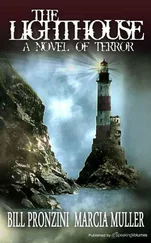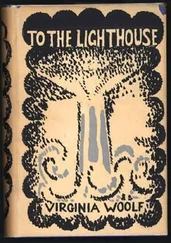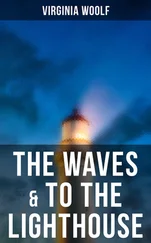Scotland contributed her own heavy percentages to the traffic in other ways. Union with England had brought benefits, albeit slowly. Immediately after 1707, the changes were mainly internal: cattle sales to English markets, corn to English mills or men to English employment. But after the 1745 Jacobite Rebellion, Scotland’s trade with Europe accelerated and the age of the Great Improvers began. Landlords in the Highlands cleared the straths for sheep, packed off the protesting population to stony coastal settlements, taught them how to fish and left them to make a life for themselves. Some of the settlements died quietly, others took root and became export centres for wool, flax or fish. The subjugated regiments joined English wars and British battles or went south to the new shipbuilding yards in Glasgow or Greenock. Several thousand Highlanders left for the New World on leaky ships, some of which did not last the journey. Edinburgh functioned as both Continental trading post and garrison town, providing goods for export and men for war. When the press gangs sought fodder for their frigates, they looked first to the Scottish capital. For whatever cause, the population of Scotland was on the move in a way that it had not been before, and much of that movement was by sea.
And as the sea cluttered up with shipping, so it accumulated shipwrecks. In the 1790s, an average of 550 ships were wrecked every year on British shores; by the 1830s, the numbers had risen to well over two a day. The vast increase in nautical traffic around Europe had not yet been matched by any improvement in safety. There was no regulated distress code and only the most clumsy and primitive of aids: heavy leather lifejackets or inadequate row-boats. By 1800, Lloyds of London estimated that one ship was lost or wrecked every day around Britain; between 1854 and 1879, almost 50,000 wrecks were registered. The figure is probably ludicrously low. Many wrecks never reached the attention of the local Admiralty officer, either through difficulties in communication or, more likely, through deliberate concealment. Both the navy and the merchant shipowners learned through bitter experience to expect a certain percentage of their ships to sink every year they sailed. With the mortality rate so high and conditions so bad, the sailors themselves could only cultivate a brutal fatalism about their work. They lived in a twilit world, with their own jargon and codes; most did not expect to live beyond the age of forty. They regarded the government with suspicion, the law with indifference, and their landlubber compatriots with derision. They were accustomed to shipwreck or injury, they accepted that the sea was unsafe, and they remained suspicious of men who promised salvation.
Given such an ominous background, it was evident that changes would have to be made. By the 1780s, the swell of public agitation had become too strong for the government to ignore any longer. But it is notable that the pressure for lighthouses did not emerge from the sailors most at risk or indeed the organisations best equipped to provide lights. The pressure came from the shipowners and the naval captains, both of whom were keen to minimise the risks in sending precious cargo to sea. Their crews, the men who did the dying, seemed either so pessimistic about their chances for survival or so sceptical of innovation that it took several decades to convince them of the need for lights. It was the captains, the money men and the merchants who agitated most fiercely for action. Finance, as usual, took precedence over compassion. But out of such necessity came something more exceptional than the usual desultory efforts to mark the places between the sea and the land. Though the drive to build the Scottish lights was commonplace enough, the men who came to fill that role were made of rarer stuff.
For a short while, it seemed as if Robert Louis Stevenson might fulfil his parents’ ambitions. For nearly twenty years, he had been a worry to them. Now, when it came to settling down, he alarmed them even more. First there had been the sickliness, then the lack of schooling, then the whispers of midnight societies and shady liaisons. Worst of all was Louis’s terrible wandering mind. He seemed not to stick at anything, and spent most of his time aimlessly pacing the streets of Edinburgh or dabbling in books. His mother pleaded, and his father, Tom, grew neurotic with worry. Louis, guilty and cross, avoided home. Finally, in the spring of 1868, Tom persuaded his son that it was time he applied himself properly to the family business. Louis was to be enrolled at the University of Edinburgh to study civil engineering, and would spend his summer vacations serving his apprenticeship at his father’s projects around the country. First he was to go to the harbourworks at Anstruther and Wick, then on the lighthouse steamer’s journey round Orkney and Shetland and finally he would supervise the Dhu Heartach lighthouse works on the Isle of Earraid. Whether he liked it or not, he would follow in his father’s footsteps, just as Tom had followed in Robert’s. Louis capitulated and for a while his parents stopped fretting.
It did not last long. For three long summers around the northern shores of Scotland, Louis tried to bend his mind to the disciplines of engineering. Tom received erratic reports of progress, the news of an underwater trip in a diving bell, and occasional muffled cursings at the intransigence of the weather or the incompetence of the workmen. Louis experimented with waves, fussed over the slowness of his drawing and tried without conviction to improve his mathematics. ‘My daily life,’ he told his cousin Bob gloomily, ‘is one repression from beginning to end.’ While Tom continued to receive news of the slow progress of building at Dhu Heartach, Louis spent the rest of his leisure time wistfully discussing metrical narratives and small beer in letters to friends. In the spring of 1871, back in Edinburgh, Louis presented a paper, ‘On a New Form of Intermittent Light for Lighthouses’, at the Royal Scottish Society of Arts. The essay showed the accumulated knowledge of three obedient years following the Stevenson grail: it was workmanlike, efficient, and showed no spark of initiative whatsoever.
Tom was among the audience and watched Louis being awarded the Society’s silver medal. For him, it was a proud and vindicating moment; Louis, it seemed, had finally submitted to good sense. A week later, the two walked out to Cramond. ‘On being tightly cross-questioned,’ wrote Louis later, ‘I owned that I cared for nothing but literature. My father said that was no profession.’ Angry and desperate, Tom suggested something else instead, ‘and so, at the age of 21, I began to study law.’ It was small consolation for both of them since Louis was no more interested in advocacy than he was in engineering. Tom was left to blame his son’s fall from grace on a surfeit of imagination and too many books. Later, the two fell out even more dramatically over Louis’s agnosticism, but even then never completely separated. For years, Tom continued to send his son corrective notes on his fiction; a little more Scripture here, a little sermonising there. Sensibly, Louis ignored him. But it was a measure of Tom’s affection that he abandoned his engineering ambitions for Louis with so little resistance. As Maggie Stevenson, Louis’s mother, later noted, ‘it was a cutting-short of his own life, as he had looked forward to its being continued in his son’s career.’
Louis, it seemed, had been quick to recognise both the benefits and drawbacks of his family’s profession. As he wrote in The Education of an Engineer ,
It takes a man into the open air; it keeps him hanging about harbour sides, which is the richest sort of idling; it carries him to wild islands, it gives him a taste of the genial dangers of the sea; it supplies him with dexterities to exercise; it makes demands upon his ingenuity; it will go far to cure him of any taste (if ever he had one) for the miserable life of cities. And when it has done so it carries him back and shuts him in an office! From the roaring skerry and the wet thwart of the tossing boat, he passes to the stool and desk; and with a memory full of ships, and seas, and perilous headlands, and the shining pharos, he must apply his long-sighted eyes to the petty niceties of drawing, or measure his inaccurate mind with several pages of consecutive figures. He is a wise youth, to be sure, who can balance one part of genuine life against two parts of drudgery between four walls and for the sake of the one, manfully accept the other.
Читать дальше












